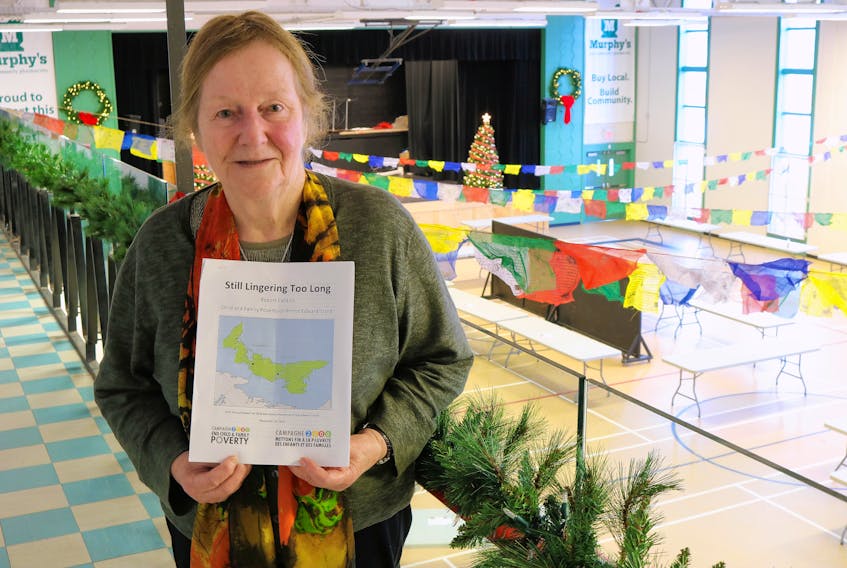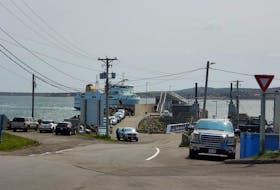CHARLOTTETOWN, P.E.I. — Since 2014, P.E.I. had been seeing a decline in the number of children living in poverty.
That changed in 2018, says a recently released report.
This year’s P.E.I. Child and Family Poverty Report Card shows the number of children and adults living in poverty started to inch back up again in 2018, the most recent data available.
The report card, an initiative of the MacKillop Centre for Social Justice in co-operation with Campaign 2000, found the percentage of children living in poverty grew from 18.6 to 19.4 per cent between 2017 and 2018. There were 5,580 children living in poverty in 2018.
The percentage of the total population that is considered low income also grew from 16.3 to 16.9 per cent. This means that, as of 2018, 25,100 Islanders were living in poverty, according to the report. This is the highest number in the last 18 years.
“Although an overall decline of 0.6 per cent does not seem like a lot, it is concerning that, the long, slow climb in the eradication of poverty is headed in the wrong direction,” the report says.
Mary Boyd, the author of the annual report, attributed the uptick in poverty to the rental housing crisis in urban areas, as well as persistent unemployment and low wages.
“Connected to low wages, of course, is part-time and seasonal work,” Boyd said.
By the numbers
A look at P.E.I.'s low-income numbers by age group in 2018 compared to 2017.
2017 2018
Low-income Islanders (0-17) 5,320 5,580
Low-income Islanders (18-64) 13,910 14,700
Low-income Islanders (65+) 4,480 4,820
Total low-income Islanders 23,710 25,100
Source: P.E.I. Child and Family Poverty Report Card
The continuing rental housing crisis in urban areas has not helped matters. Boyd said 70 per cent of renters in P.E.I. have less than one month of savings.
More than 45 per cent of children living in poverty live in single-parent homes. This represents a significant decrease from 55 per cent in 2014. By contrast, the number of children in poverty living in homes with two parents rose to 10.4 per cent in 2018 to from 9.4 per cent in 2017.
The 2018 uptick in child poverty comes despite increases to the Federal Canada Child Benefit (CCB), which was credited for reductions last year.
“In many ways, it did its job. The problem is it’s not high enough and it needs to be increased,” Boyd said.
The report card recommends the introduction of a P.E.I. child benefit, on top of the federal CCB.
The report card does not call for the implementation of a basic income guarantee. Instead, the report recommends the implementation of a federally funded job guarantee program, which would be administered by the province.
This recommendation differs substantially from a recent report of an all-party legislative standing committee on poverty.
A job guarantee program would involve a bank of public service jobs distinct from the provincial public service commission.
Boyd argued this would more effectively address poverty than a basic income guarantee, which would be subject to inflation.
“Writing a cheque from Ottawa does not supply more daycare. The price of transportation can go up, the price of housing can go up – all those things. And that eats away at that income," Boyd said.
She also argued against the committee’s recommendation to use the market basket measurement (MBM) as the measure of poverty on P.E.I. The MBM is a regional measure that takes into account a fixed basket of basic necessities, including housing, food, clothing and heat.
But Boyd argued the low-income measure, which sets the rate of poverty at 50 per cent of a median Canadian standard of living, should be the indicator of choice. Boyd said use of the MBM tends to underestimate the number of people living in poverty in Canada.
While levels of poverty rose in 2018, so did the amount of income earned by the richest Islanders. The richest 10 per cent received 25 per cent of all wealth in P.E.I., while the poorest 10 per cent received 2.5 per cent.
"In spite of poverty increasing at the bottom, the top 10 per cent have done very well," Boyd said.
Stu Neatby is The Guardian's political reporter. He can be reached by email at [email protected] and followed on Twitter at @stu_neatby.









